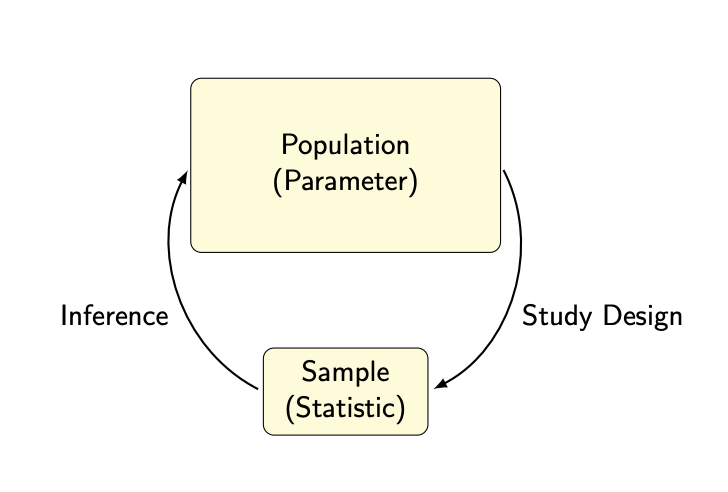Population
A population is a constrained group of subjects/events/things about which we wish to ask a scientific question.
For population, we have a relative small subset that we apply statistic on called sample.
relation ship image
Population and sample have this relationship as the picture shows:

This diagram shows the fundamental idea behind inferential statistics. The large box at the top represents the entire population—everyone or everything you are interested in studying—and the unknown quantity there is the Parameter (e.g., a true mean, proportion, or other characteristic in the population). Because it’s typically impossible or impractical to measure everyone in the population, we design a study(see Study design) to collect data from a sample (the smaller box at the bottom). From this sample, we calculate a Statistic (like a sample mean or proportion).
We then use inference to go back from that sample statistic and draw conclusions or make predictions about the population parameter. In other words, the “study design” arrow points from the population to the sample—showing how data are gathered—and the “inference” arrow points back to the population—showing how we use that sample information to learn about the broader group.